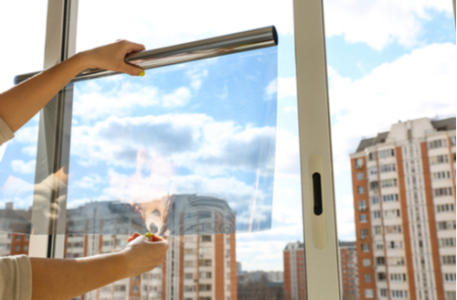
7 Upgrades that Make Your Windows More Energy Efficient
The windows in your home may provide cherished views and natural light, but they also play a significant role in your heating and cooling costs. If you aren’t satisfied with how some or all of your windows are performing, there are many ways to upgrade their performance without replacing them. Consider these options.
1. Window Coverings
Many types of shades, drapes, and blinds can be beneficial for reducing heat loss in winter or heat gain during hotter months, and there are ways to keep the costs down. First, however, investigate insulated cellular shades, insulated drapes, and window quilts for the best energy improvements.
2. Storm Windows
Traditional storm windows are installed on the exterior side of double-hung windows and have two glass panels and one screen. You can slide both glass panes to the top and lower the screen in the summer.
But there are now many other types of storm windows, including acrylic panels and sheets of plastic film mounted onto a frame, then held in place on the interior side of your windows.
3. Weatherstripping
To make your home more air-tight, try adding weatherstripping. The best type depends on the kind of windows and whether you want to open and close them. For example, you can apply transparent weather tape around a window’s perimeter at the beginning of each heating season, but the window must remain closed.
4. Window Films
If you live in an area with a long cooling season, window films can help block solar heat gain while reducing glare and protecting you and your furnishings from ultraviolet exposure. Window films are tested and rated by the National Fenestration Rating Council. Look for their label when comparing products.
5. Exterior Shutters and Shades
A wide range of exterior shutters and shades provide more options for homeowners who want to reduce cooling costs. Systems are made of fabric, wood, steel, aluminum, or vinyl and include cranks or motors, so it’s easy to open and close them indoors. In addition to reducing solar heat gain, exterior shutters and shades may be able to protect your windows during hurricanes and other severe storms.
6. Awnings
Awnings can be fixed or retractable and are used to shade both windows and outdoor living spaces. Today’s products use synthetic fabrics that last longer and may be water-repellent and mold-resistant. To prevent hot from being trapped inside the top of the awning, openings are often added along the upper edge or sides to provide ventilation.
7. Solar Screens
Solar screens resemble traditional insect screens but provide additional benefits like reducing solar heat gain, UV damage, and glare. They can be installed on the interior or exterior side of the window as fixed panels of rolled shades.
